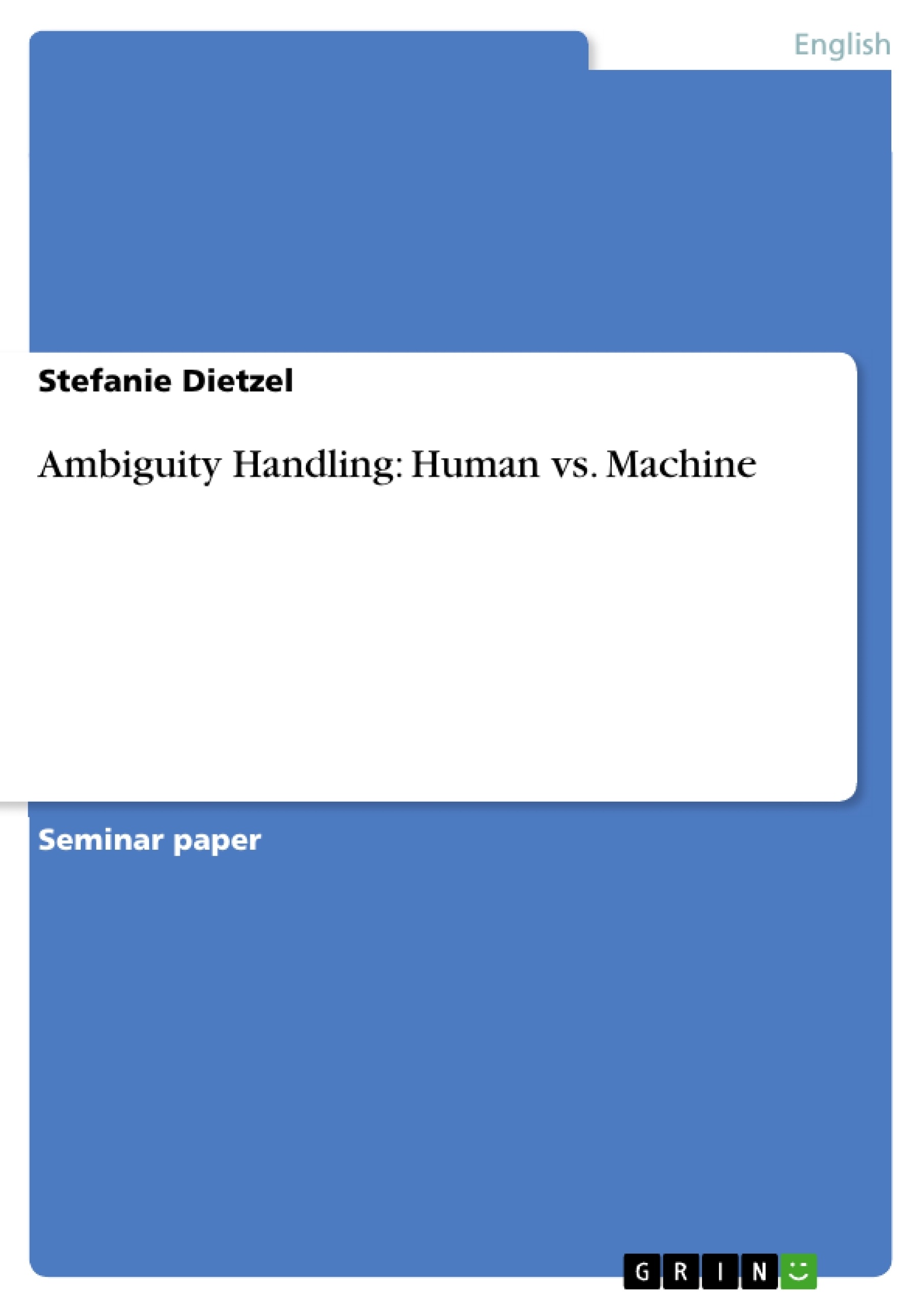“Ambiguity is pervasive at all levels of analysis. It has been, is, and is likely to remain the key problem in natural language processing.” (Gadzar 1993:161) This statement by Gerald Gadzar expresses the necessity to cope with the challenge of ambiguity resolution. As the phenomenon of ambiguity is widespread in human language, an interesting question would be: How could a machine be able to handle ambiguity while even humans have difficulties in solving such problems?
This paper will first define the phenomenon of ambiguity and explain the different types of it. An interesting aspect will be the effect of garden path sentences.
Inhaltsverzeichnis (Table of Contents)
- Introduction
- The phenomenon of Ambiguity
- Ambiguity: Definition
- Different Types of Ambiguity
- Syntactic Parsing
- The Garden Path Model
- Constraint-based Model of Parsing
- Reanalysis in Sentence Processing
- Ambiguity Resolution
- The Way Humans Handle Ambiguity
- The Way Machines Handle Ambiguity
- Conclusion
Zielsetzung und Themenschwerpunkte (Objectives and Key Themes)
This paper investigates the pervasive issue of ambiguity in language, particularly in the context of human and machine comprehension. It aims to provide a comprehensive overview of the phenomenon of ambiguity, explore different types, analyze the process of syntactic parsing, and compare human and machine approaches to ambiguity resolution. The paper explores techniques employed by computers to handle ambiguity, ultimately concluding with a discussion of the challenges and advancements in this field.
- The nature and types of ambiguity in language
- Syntactic parsing and its role in resolving ambiguity
- Different models of parsing, including the Garden Path Model and the Constraint-based Model
- Comparison of human and machine approaches to ambiguity resolution
- Ambiguity resolution techniques employed by computers
Zusammenfassung der Kapitel (Chapter Summaries)
- Introduction: This section introduces the paper's focus on ambiguity in language, highlighting the significance of ambiguity resolution for human and machine comprehension. It briefly outlines the paper's structure and key points.
- The phenomenon of Ambiguity: This chapter defines the phenomenon of ambiguity and explores different types, including lexical ambiguity, structural ambiguity, and the distinction between local and global ambiguity. It uses examples to illustrate these concepts.
- Syntactic Parsing: This chapter delves into the process of syntactic parsing, explaining how machines analyze the structure of sentences to resolve ambiguity. It compares and contrasts two main parsing approaches: the Garden Path Model and the Constraint-based Model.
- Ambiguity Resolution: This chapter examines how both humans and machines handle ambiguity. It discusses various techniques employed by computers to resolve ambiguity, providing insights into the challenges and advancements in this field.
Schlüsselwörter (Keywords)
This paper focuses on the concepts of ambiguity, syntactic parsing, ambiguity resolution, human language processing, computational linguistics, and the differences between human and machine comprehension of language. It explores topics like lexical ambiguity, structural ambiguity, garden path sentences, constraint-based parsing, and reanalysis in sentence processing.
- Arbeit zitieren
- Stefanie Dietzel (Autor:in), 2006, Ambiguity Handling: Human vs. Machine, München, GRIN Verlag, https://www.grin.com/document/133403



